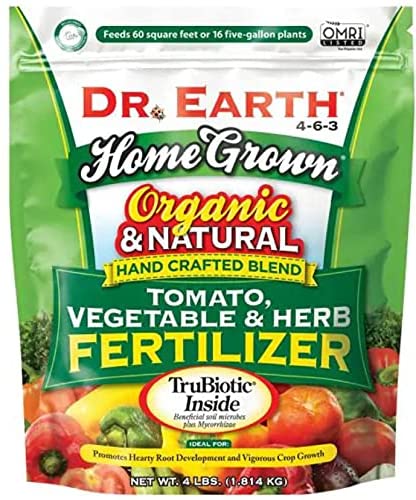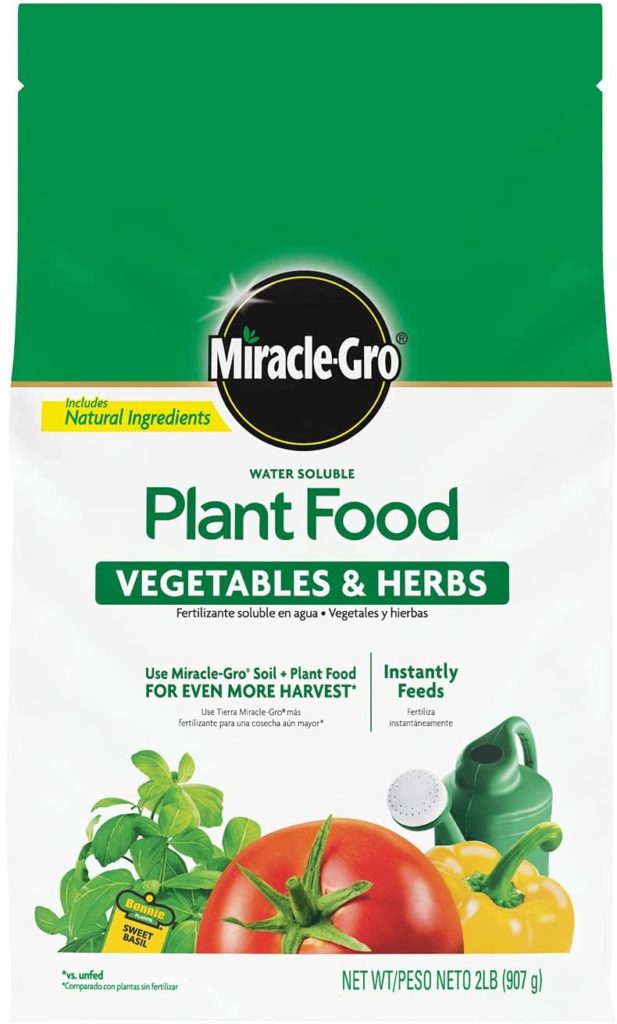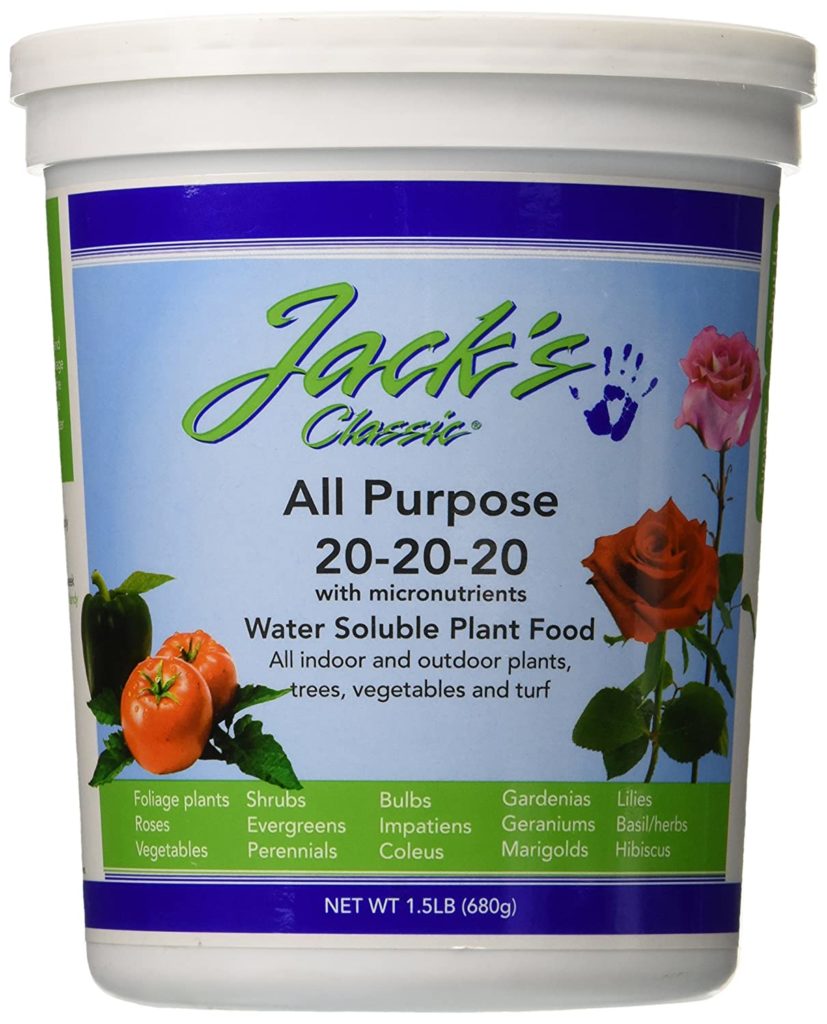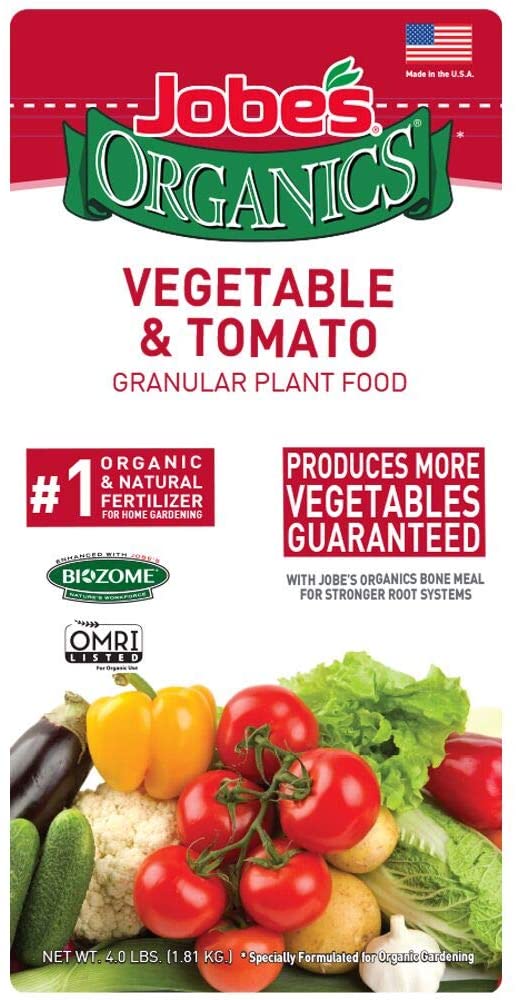A perennial crop, Rhubarb has crimson stalks that can be harvested for five years after planting. However, to guarantee that the plant continues to grow at a healthy rate, a high-quality fertilizer is required.
Fertilizers that include a high level of NPK and other macro-and micronutrient nutrients help improve the soil’s organic composition while also providing immediate and long-term sustenance to the plants and animals.
Top 5 Bougainvillea Fertilizers Rhubarb
A perennial plant like Rhubarb can be planted and harvested annually for five years. Therefore, it is essential to use a high-quality fertilizer to keep up with its quick development. If you are growing Rhubarb at home or in a garden center, it is recommended that you use an NPK ratio of 12-12-12 for your fertilizing. It will also assist your plants if you supplement your fertilizer with calcium and magnesium. The following is a list of some of the top rhubarb fertilizers.
1. Dr. Earth Organic Tomato, Vegetable & Herb Fertilizer
In addition to the numerous organic nutrients present in this OMRI-listed product (such as alfalfa and rock phosphate), it also contains a range of fish and kelp meals and bone and feather meals as potassium sulfate.
It contains 4 percent nitrogen, 6 percent phosphorus, 3 percent potassium, and 7.5 percent calcium. Because it is derived from natural sources, it offers the soil an extra source of minerals like magnesium and sodium, in addition to other essential elements such as manganese, copper, zinc; chlorine; and molybdenum.
Nutrients are being investigated. In this fertilizer, all of the nitrogen is delivered in a slow-release over time. Rhubarbs that are already established, as well as seedlings, can benefit from this fertilizer. The remaining nutrients can all be dissolved in water to complete the process. As a result, your Rhubarbs will benefit from this device in terms of both immediate and continuous nutritional support.
TruBiotic, a soil inoculant with a broad spectrum of colony-forming capability, is the most notable aspect of this product. The presence of beneficial bacteria and mycorrhizae in the soil helps to enrich the soil. Organic soil is ideal for growing Rhubarb because of its high nutrient content and pH. In addition, the organic material guarantees that the soil beneath the foundation drains properly and efficiently. Humic acid is present at a 6 percent concentration to test for both conditions.
Features:
- Granular fertilizer
- Handmade Organic Natural Blend
- NPK ratio: 4-6-3
Direction for Usage:
It’s granular fertilizer. Half a cup of fertilizer should be added to the topsoil of a 12-inch diameter pot. Before watering thoroughly, scrape the soil with your hands for better results.
Pros and Cons:
- Specifically designed to nourish tomatoes, veggies, and herbs
- TruBiotic beneficial soil microorganisms and mycorrhizae are included in this product
- There are no synthetic chemicals or chicken excrement that has been contaminated with GMOs
- Handcrafted with premium food-grade fish
- Incorrect fertilizer dose might cause harm
2. Miracle-Gro Garden Soil
When the NPK ratio of the fertilizer is 18-18-21, it indicates that it provides a high concentration of nutrients. In addition to these essential macro-and micronutrients, there is a 50 percent magnesium content, 5 percent copper, 0.9 percent iron, 0.005 percent molybdenum, and 0.1 percent zinc content in the mix. Furthermore, you can rest assured that these nutrients are derived from inorganic sources that are both safe and environmentally friendly.
Rhubarb seedlings and established plants both require a high quantity of nutrients to generate the crimson stalks characteristic of the plant. Therefore, this plant food will also take care of the issue. Among the most prevalent kinds of nitrogen that plants can absorb are ammonium (NH4+) and nitrate (NO3-), which are both nitrogenous compounds (NO3-). Therefore, this fertilizer can ensure appropriate nitrogen uptake for both types of nitrogen uptake.
This water-soluble fertilizer also delivers quick nutrients to your Rhubarb plants, allowing them to grow at their fastest possible rate. In addition, rhubarbs contain chelated Iron and manganese, ensuring that they are absorbed and that unwanted responses are kept to a minimum.
Miracle-Gro Water-soluble Fertilizer, marketed as a Soil and Plant food, is available. Both the top and bottom of your Rhubarb are treated simultaneously with this product. Moreover, the firm is promoting this product to boost the productivity of vegetable crops.
Features:
- 100% organic
- Quick-release
- Nutrient ratio: 18-18-21
Direction for usage:
Rhubarb plants should be soaked in 2 liters of water with a half tablespoon of fertilizer mixed in before being transplanted into the ground. After that, you’ll be able to relax for another 7-14 days without worrying about anything.
Pros and Cons:
- Easily dissolvable
- It is quite light in weight
- Organic products are 100 percent natural
- There is no scorching effect
- Unsuitable for fully fertile soil
Also Read: Best Fertilizer for Bougainvillea in 2022 – A Complete Buying Guide
3. JR Peters Jack’s Classic All Purpose Fertilizer for Rhubarb
It’s a high-quality fertilizer that contains just the finest ingredients. Compared to other popular brands, it melts more quickly and yields fewer cakes. A blue tracer is also included in the bundle as a bonus. The NPK ratio is 20 -20-20. This all-purpose fertilizer helps in the rapid greening and growth of plants and helps maintain their health.
The primary objectives of this supplement are the development of roots and shoots. Rhubarb is water-soluble means that you may start feeding it right away. It also contains copper, iron, manganese, and zinc in the chelated form to guarantee that these metals are available when needed and to prevent harmful responses when they are not.
Features:
- Nutrient value: 20-20-20
- Water-soluble
Direction for Usage:
Apply a solution of 1/4 teaspoon of this fertilizer mixed with 1 gallon of water to the soil by spraying or soaking it.
Pros and Cons:
- Plants, trees, vegetables, and surf benefit from this fertilizer
- It receives nutrition from both the roots and the leaves
- Foliage plants, in particular, benefit greatly from their use indoors, as it helps to maintain their leaves vibrantly green
- It’s too powerful for houseplants
4. Jobe’s Organics Vegetable & Tomato Granular Plant Food
Rhubarb producers typically refer to this fertilizer as the “best fertilizer for Rhubarb.” According to the statistics, home gardeners rely on Jobe’s Organics products because of the unique blends and features that distinguish them from the market. Almost all of the nutrients in this OMRI-approved fertilizer are derived from three natural sources: bone meal, poultry manure, and potassium sulfate.
NPK is divided into five parts and three parts of nitrogen. The other macronutrients specified are calcium, magnesium, and sulfur. It’s a good thing, too, because the sources also provide micronutrients such as manganese, copper, zinc, chlorine, and vitamins B and Fe. As you’ve already noticed, phosphorus and calcium are present in significant fertilizer amounts.
As a result, Rhubarbs’ root and stem growth and development are boosted by phosphorus in the soil. Likewise, calcium, which is an antioxidant, can help slow down your rhubarb plant’s aging process.
It also contains phosphorus (P) and calcium (Ca), which are essential for providing both immediate and long-term nourishment to the plants. Bone meal, which is a food source, also assists in the strengthening of the roots of plants by providing calcium. A one-of-a-kind organic fertilizer formulation has been created. In addition, Jobe’s Special Biozome is a combination of beneficial colony-forming bacteria, endo mycorrhizae, and archaea contained within the package of this product. You will be able to maintain healthy, organic soil with the help of this blend.
Features:
- Quick-release
- Organic granular fertilizer
Direction for Usage:
One and a half cups of granular fertilizer are recommended to be applied per foot of Rhubarb that is planted in pots. Then, every four to six weeks, give it a thorough watering and reapply.
Pros and Cons:
- Organic granular fertilizer for faster growth of plants and tomatoes
- Powerful proprietary microbe archaea that break down material quickly
- Jobe’s Biozome enhances soil conditions and helps your garden fight disease, insects, and drought
- Based on the weather, results may vary
5. Espoma Plant-tone All-Purpose Plant Food
The best choice is Espoma’s All-Purpose Fertilizer, available at most garden centers. As a result of its performance, gardeners appear to be enthusiastic about it, and it would rank it as a top-rated fertilizer when it comes to “Value for Money.” Espoma All-purpose Plant Food has an NPK ratio of 5-3-3, which is a good balance. With each 100g serving of this fertilizer, rhubarb plants will receive a staggering 5 grams of nitrogen, 3 grams of phosphorus, and 3.5 grams of potassium.
Furthermore, this fertilizer contains other macronutrients such as calcium, magnesium, and sulfur. These nutrients are derived entirely from organic and natural sources, which is fantastic news! Other additives are feather and bone meal, bone meal, poultry manure meal, alfalfa meal, green sand, sulfate of potash, and sulfate of potash magnesia. And the micronutrients are iron, manganese, copper, zinc, molybdenum, boron, and chlorine, even though they are required in smaller amounts.
Nitrogen is available in this fertilizer in two forms: water-soluble nitrogen and water-insoluble nitrogen. Your Rhubarb will benefit from a continual and rapid infusion of nitrogen, which will ensure that it continues to grow at a healthy rate. As you are aware, Rhubarbs require significantly more of everything in their first year of growth. In this situation, equal doses of P and K would be beneficial.
However, calcium, magnesium, and sulfur increase the amount of organic matter in the soil. Rhubarbs flourish and grow best on soils that are rich in organic materials. To summarize, micronutrients encourage root growth and bud creation, resulting in strong and long-lasting stems.
This brownish dust will help all of your garden’s trees, shrubs, vegetables, flowers, and lawn. An additional distinctive feature is the bio Tone formula, which contains beneficial colony-forming units like bacteria and mycorrhizae that assist in maintaining your soil fertility by promoting the growth of beneficial bacteria and mycorrhizae in the soil. In addition, humic acid is added to the fertilizer to assist in absorbing nutrients, establishing roots, and resistance to drought.
Features:
- Nutrient ratio: 5-3-3
- 100% organic
- Liquid fertilizer
Direction for Usage:
If you want to grow Rhubarb in a pot, combine three tablespoons of the fertilizer with the dirt of a 9-inch diameter pot. Then, reapply the water and allow it to soak in for another month.
Pros and Cons:
- Increases the size of the leaves
- Stalks of sturdiness
- Encourage the establishment of lush vegetation
- Encouraged the development of strong roots
- When used incorrectly, it might cause more harm than good
Frequently Asked Questions (FAQs)
Fertilizer for one’s Rhubarb plants is essential for two reasons. First, the plant needs additional nutrients to produce vigorous stalks and pleasantly tart fruit, so it’s important to remember this when growing your plant. Because it grows as an annual rather than a biennial, Rhubarb requires more fertilizing than other vegetables, which is the second reason it requires more fertilization.
Slow growth and yellowed leaves are two of the most common problems when Rhubarb is not properly fertilized. Using the appropriate fertilizer for the plant (e.g., slow-release pellets or liquid) and compliance with the timing requirements can help avoid these issues.
• The leaves should be selected when they are little and fragile, but before they have fully developed into a mature plant.
• The stems of each leaf should be cut about a foot below the water level. The plants will grow more vigorously in the spring, and they will not get overly woody or leggy by the fall as a result of this.
• Mulch as much as possible.
Fertilize your rhubarb plants three to four times a year with a balanced fertilizer. The first two sprays should be performed in the spring before new branches emerge from the ground, and the third spray should be performed during the blooming season (mid-spring to early summer). Following harvest, rhubarb leaves will begin to turn brown and die back in the late fall, when the third spray will be administered to the plant.
Conclusion
Any fertilizer you use should be kept away from the vegetable’s stems to avoid damaging them. Stay at least a few millimeters away from the plant if you want to avoid it burning. In addition, keep in mind that it is preferable to under-fertilize rather than over-fertilize if you want to fertilize more plants in a shorter amount of time.
Before using rhubarb fertilizers, make sure you thoroughly read the package instructions. Comprehensive instructions accompany each high-quality fertilizer. If you’re using it in conjunction with organic fertilizer, you can use less than the recommended amounts. With the right amount of fertilizers at the right time, you will have your healthy Rhubarb.




